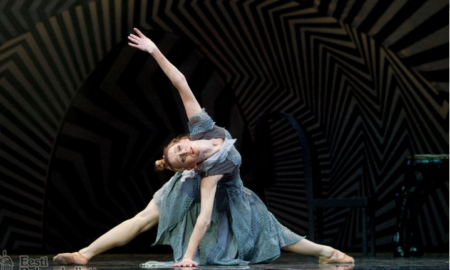“This is the main aim of the exhibition – to be the critical and polemical tool, and the means for initiating a discussion, instead of offering a place for presenting comprehensive research results and final assessments. To provide leads for future research and to discuss what viewpoints could be used to reflect on architecture.” This is how the text of the first feminist architecture exhibition in Estonia (known to the author) that is titled after one of Virginia Woolf’s essays explains the exhibition.
A Room of One’s Own is not a ready-made and resolute product, but is more like fragments from a diary, ideas that support and oppose one another. It is a collage of different topics that relate to the relationship between women and architecture, women as creators of architecture as well as women as ‘consumers’ of architecture.
The exhibition A Room of One’s Own is divided into nine rooms that each approach a set of different questions that lie within the scope of a broader subject. This distinguishes the exhibition from the exhibition canon of classical architecture – these themes are not merely specific to the author, but the room is also viewed as a social and aesthetic construction. The exhibition begins by introducing statistics about local women architects and progresses on to more abstract and broader concepts. Here, the exhibition moves away from women-centred approach and begins to research the ideas that the feminist approach has brought to architecture as a discipline – for example, valuing private space, spatial equality, home decoration, and collectivism.
At the same time, when we step away from the concept of the exhibition, feminism and women in architecture, we can view the display as an alternative history for architecture. The selection of exhibition works is varied and many of them have received undeservedly little attention, because of their author being less known or their subject matter has remained in the background. For example, there are interesting works by Heili Volber, who designed the Tallinna II Lastekodu (Tallinn Children’s Home) with interior designer Aate-Heli Õun in 1976 or the Narva mööblivarbik (Narva furniture factory) by Maimu Kaarnaväli in 1958-60.
The exhibition is also a manifest that fights works that have one single viewpoint, an approach that is characteristic to modernism. There is no one and single truth that is forced on the viewer. The exhibition relies on the viewer and not the author.
The exhibition is also a manifest that fights works that have one single viewpoint, an approach that is characteristic to modernism. There is no one and single truth that is forced on the viewer. The exhibition relies on the viewer and not the author. In the first room, the viewer is confronted by dark facts from recent history when representation of women in architecture structures and institutions was low. But the last room of the exhibition admits: “The general picture of Estonian architecture confirms that creative choices are mostly influenced by the aesthetics and social truths of the period, and gender identity, if it plays a role in a project, is only present indirectly – although in some cases, the gender specific interpretation is possible as an added layer.” And so, the exhibition leaves it up to the viewer to decide what is the nature of architecture that is created by women, and whether it is possible to identify this type of construction at all. The strength of the exhibition lies in knowing how to simultaneously approach a subject from various viewpoints – being more open to discussion and trying less to prove a hypothesis.
This prevalent fragmentation also adds freshness to the exhibition design. Some rooms are designed according the exhibition canon of classical architecture, but in between them we find surprises, such as the media display by Laura Linsi and Ronald Reemaa or a room experiment on the subject of marginality and professionalism. So, if the concept of the exhibition talks about nine rooms and questions, we can also add a tenth question on the metaphysical level: what describes a feminist architecture exhibition and where are its characteristics manifested? In the subject matter? In the structure? Approach? The viewer will have plenty to think about when visiting A Room of One’s Own.

